Questions
The application allows you to ask participants a wide range of questions. Once you add a question to your survey, customize it by adding images or hyperlinks, piping in personalized values, and setting question or answer properties.
The following question types are available in your survey:
-
Support for new features and question types.
Scripting, watermarking, subtitles, Rating questions, and carousel Grid questions were released recently for modern surveys; these features are not available in classic surveys. Going forward, new feature releases will be for modern surveys only.
-
A mobile first, more modern responding interface.
We've refreshed the look of question types in modern surveys. All mobile, tablet, and desktop participants get the same visually appealing question view. The responsive responding interface merely expands or shrinks to fill the device screen.
-
Better performance.
Modern surveys can handle a higher number of survey starts and have better overall responding load times.
To get started, create a new modern survey or convert a classic survey. For more information about modern surveys, see Questions in modern view.
Single Choice
Single Choice questions record a single answer from a list of two or more possible options. There are multiple display options for Single Choice questions, and although these display options appear differently to participants, their data is treated identically in reporting:
- Buttons:
Single Choice Buttons questions ask participants to
select one answer from two or more possible answers displayed on buttons. For
more information, see
Create a Single Choice Buttons question.
Sample classic desktop view:
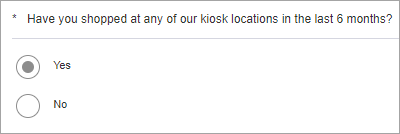
Sample classic mobile view:
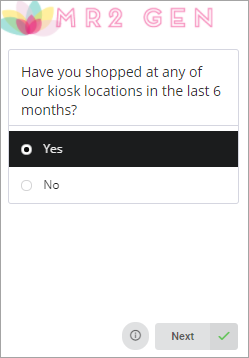
- Slider:
Single Choice Slider questions ask participants to use a
slider to select one of two or more possible answers arrayed on a scale. For
more information, see
Create a Single Choice Slider question.
Sample classic desktop view:
 Note: On mobile devices, Single Choice Slider questions are displayed as Single Choice Buttons questions.
Note: On mobile devices, Single Choice Slider questions are displayed as Single Choice Buttons questions. - Drop
Down:
Single Choice Drop Down questions ask participants to
select one of two or more possible answers from a list. For more information,
see
Create a Single Choice Drop Down question.
Sample classic desktop view:
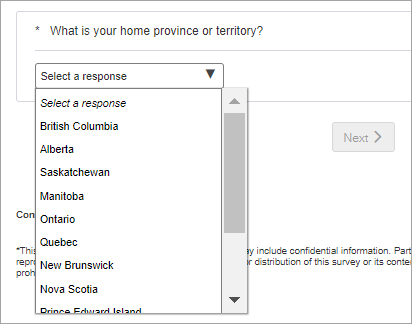
Sample classic mobile view:
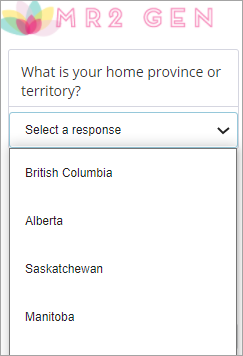
For more information about Single Choice questions, see Single Choice questions.
Single Choice Grid
Single Choice Grid questions ask participants to rate a group of items against the same criteria. There are three possible display options for Single Choice Grid questions, and although these display options appear differently to participants, their data is treated identically in reporting:
- Grid:
Single Choice Grid questions ask participants to rate a
group of items using the same criteria. Items appear as rows while criteria
appear as columns, and participants may only select one column for each row.
For more information, see
Create a Single Choice Grid question.
Sample classic desktop view:
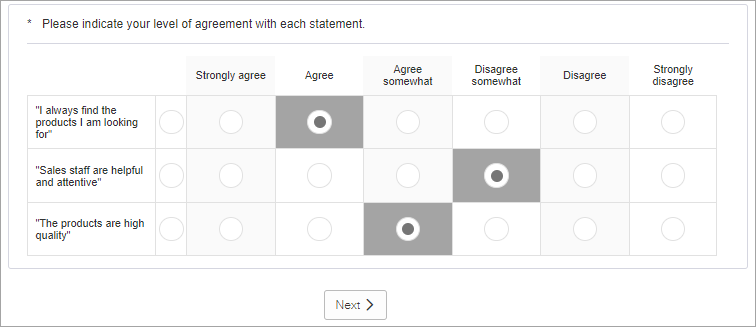
Sample classic mobile view:
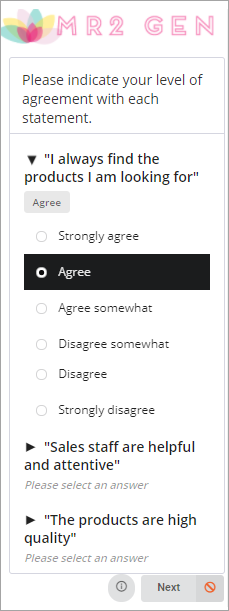
- Sliders:
Single Choice Grid Sliders questions ask participants to
use sliders to select one of two or more possible scalar answers for a series
of question items. For more information, see
Create a Single Choice Grid Sliders question.
Sample classic desktop view:
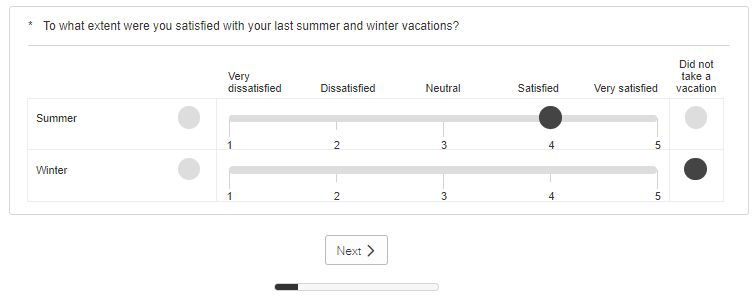 Note: On mobile devices, Single Choice Grid Sliders questions are displayed as Single Choice Grid questions.
Note: On mobile devices, Single Choice Grid Sliders questions are displayed as Single Choice Grid questions. - Cards:
Single Choice Grid Cards questions ask participants to
classify a series of cards according to answer categories. For more
information, see
Create a Single Choice Grid Cards question.
Note: The information here applies to Card Sort in classic surveys only. In modern surveys, Card Sort is its own question type rather than a display option for Single Choice Grids. For more information, see Card Sort questions in modern surveys.
Sample classic desktop view:
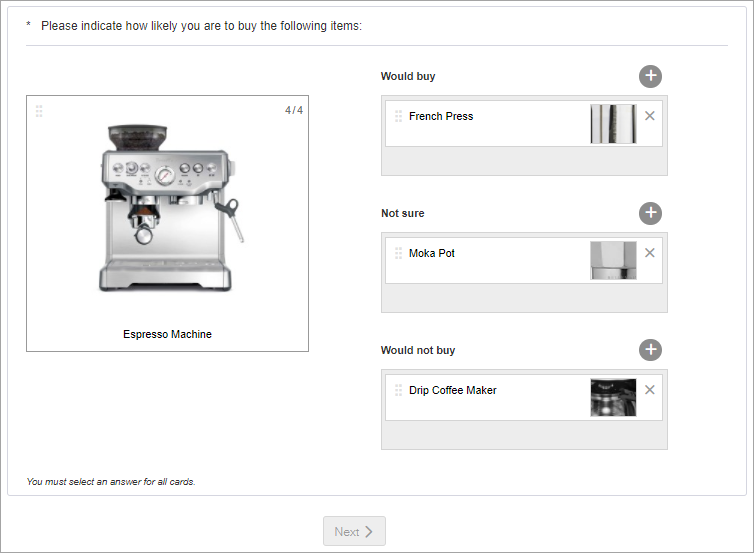
Sample classic mobile view:

On mobile devices, Single Choice Grid Cards questions are displayed as Single Choice Grid questions with images.
For more information about Single Choice Grid questions, see Single Choice Grid questions.
Multiple Choice
Multiple Choice questions ask participants to select one or more answers from a list of possible answers. For more information, see Create a Multiple Choice question.
|
Sample classic desktop view: 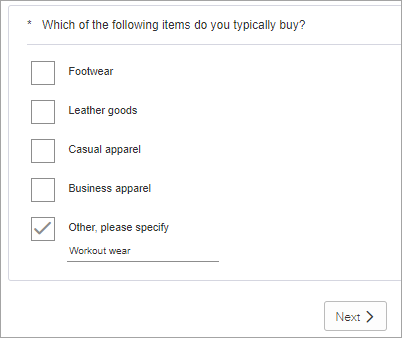
|
Sample classic mobile view: 
|
Multiple Choice Grid
Multiple Choice Grid questions ask participants to select one or more answers for a series of question items. Question items appear in rows while answers appear in columns. For more information, see Create a Multiple Choice Grid question.
|
Sample classic desktop view: 
|
Sample classic mobile view: 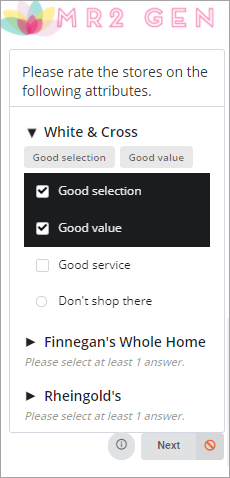
|
Net Promoter Score℠
Net Promoter Score℠1 questions ask participants how likely they are to recommend your products, services, or organization to someone else. For more information, see Create a Net Promoter Score℠ question.
|
Sample classic desktop view: 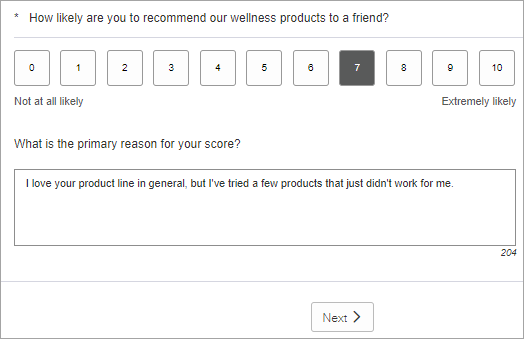
|
Sample classic mobile view: 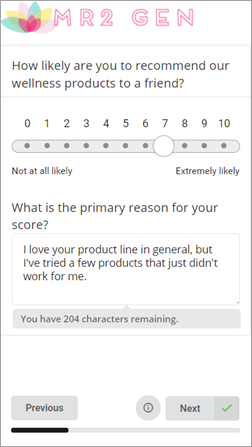
|
MaxDiff
MaxDiff questions present participants with a series of attribute sets, and ask them to select their most and least preferred attributes from each set. For more information, see Create a MaxDiff question.
|
Sample classic desktop view: 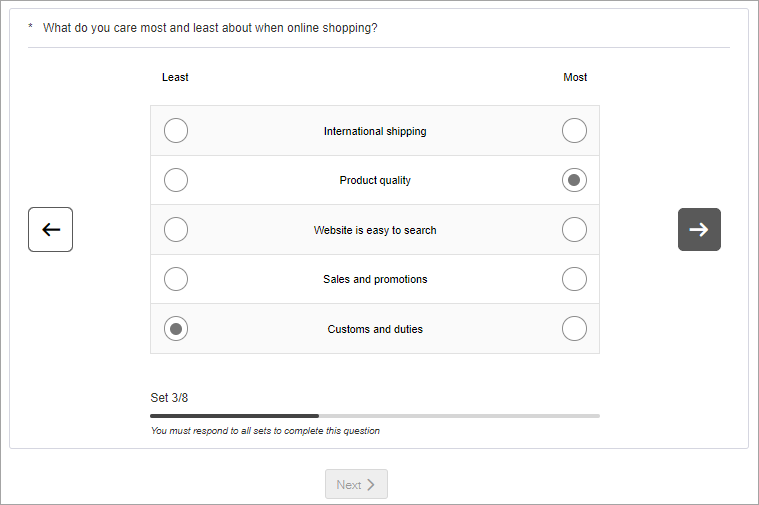
|
Sample classic mobile view: 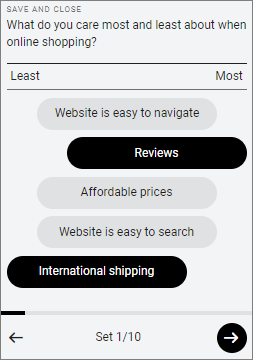
|
Choice-Based Conjoint
Choice-Based Conjoint questions presents participants with different sets of attribute packages, and asks participants to choose the most appealing attribute package from each set. For more information, see Create a Choice-Based Conjoint question.
Sample classic desktop view:
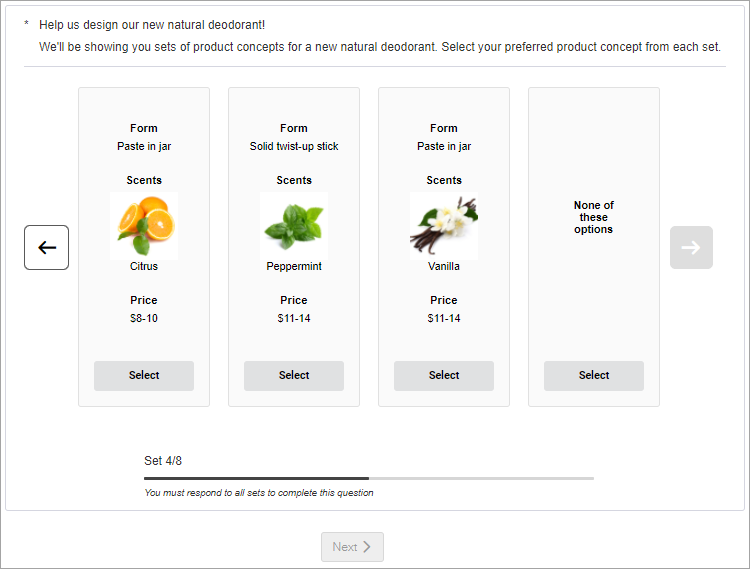
Sample classic mobile view:

Allocation
Allocation questions ask participants to divide a numerical value among competing answer options. For more information, see Create an Allocation question.
|
Sample classic desktop view: 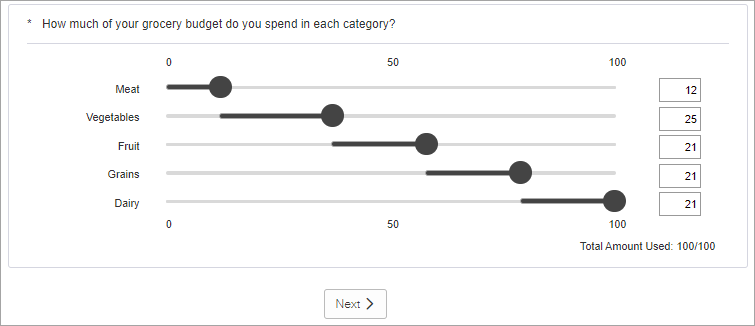
|
Sample classic mobile view: 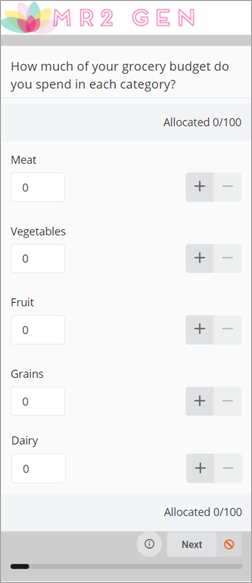
|
Rank Order
Rank Order questions ask participants to order a list of items based on a specific attribute, characteristic, or preference. For more information, see Create a Rank Order question.
|
Sample classic desktop view: 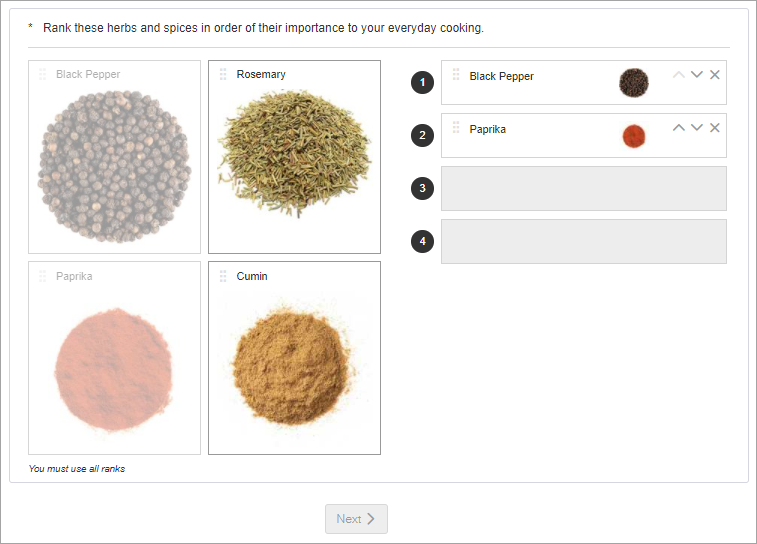
|
Sample classic mobile view: 
|
Highlighter
Highlighter questions ask participants to highlight areas of an image. For more information see, Create a Highlighter question.
Sample classic desktop view:
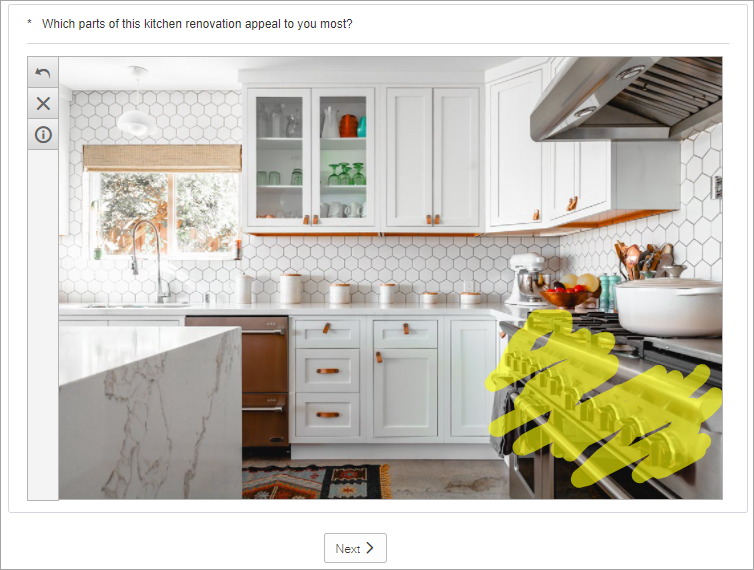
Sample classic mobile view:
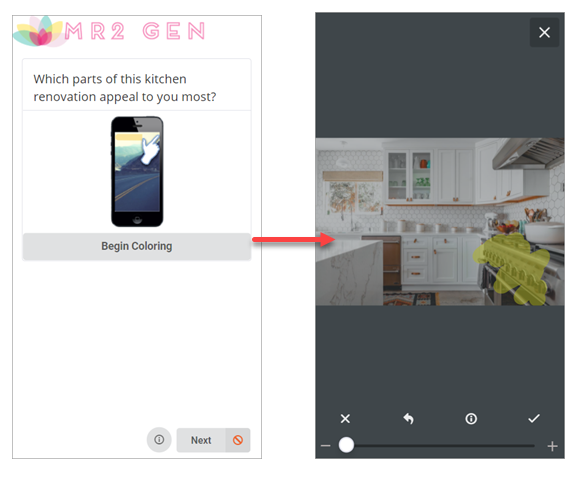
Image Upload
Ask participants to upload images from a mobile, tablet, or desktop device. After the image is uploaded, participants have the option to preview and change the image before clicking Next.
For more information, see Create an Image Upload question.
|
Sample classic desktop view: 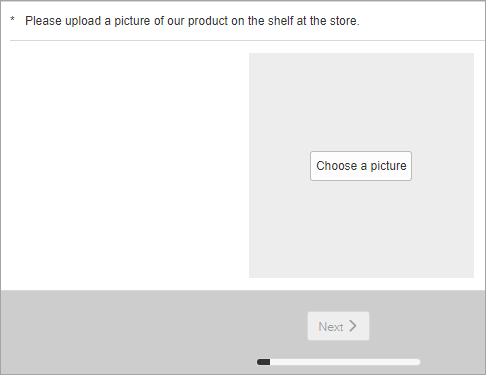
|
Sample classic mobile view: 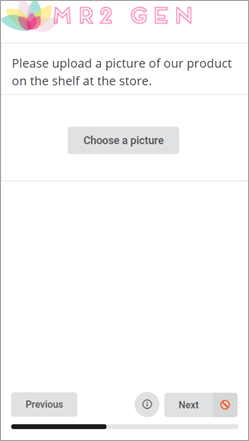
|
Video Feedback
Ask participants to record and upload a video response. This question type leverages Voxpopme functionality to record, store, organize, and analyze video responses.
For more information, see Create a Video Feedback question.
|
Sample classic desktop view: 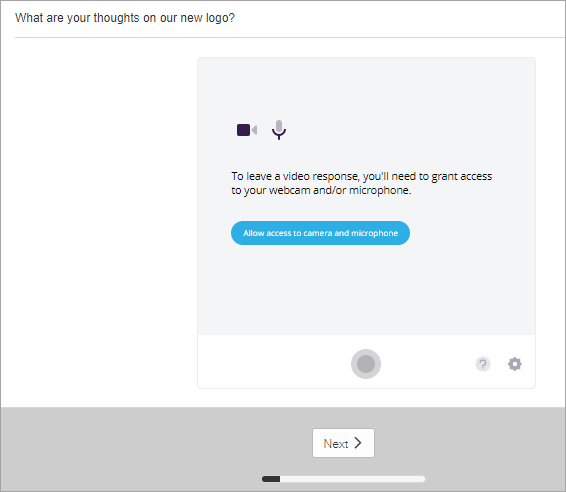
|
Sample classic mobile view: 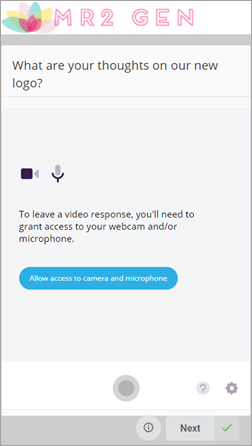
|
Short Answer
Short Answer questions ask participants to formulate one to two-word answers instead of selecting from a list of possible answers. For more information, see Create a Short Answer question.
|
Sample classic desktop view: 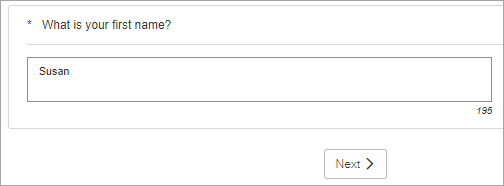
|
Sample classic mobile view: 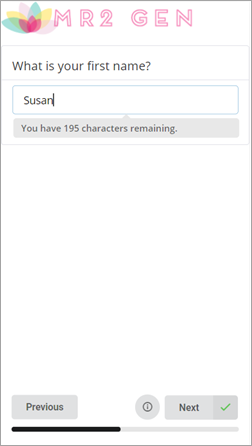
|
Long Answer
Long Answer questions ask participants to formulate answers using their own words instead of selecting from a list of possible answers. For more information, see Create a Long Answer question.
|
Sample classic desktop view: 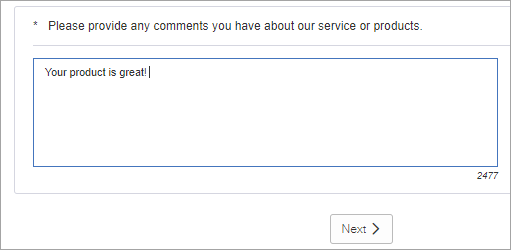
|
Sample classic mobile view: 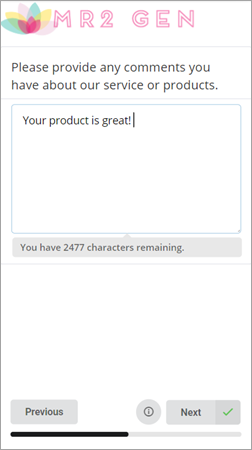
|
Numeric
Numeric questions record numeric data from participants. There are two possible display options for Numeric questions, and although these display options appear differently to participants, their data is treated identically in reporting:
- Text
Field:
Numeric Text Field questions ask participants to enter a
number as their answer. For more information, see
Create a Numeric Text Field question.
Sample classic desktop view:
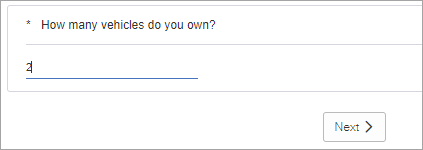
Sample classic mobile view:
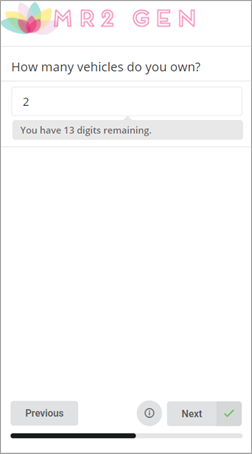
- Slider:
Numeric Slider questions ask participants to choose a
point along a scale to indicate their answer. The scale has a start and end
point, and participants drag a slider to enter their answer value. For more
information, see
Create a Numeric Slider question.
Sample classic desktop view:
 Note: On mobile devices, Numeric Slider questions are displayed as Numeric Text Field questions.
Note: On mobile devices, Numeric Slider questions are displayed as Numeric Text Field questions.
For more information about Numeric questions, see Numeric questions.
Date
Date questions ask participants to enter a date in their regional date format as an answer.
|
Sample classic desktop view: 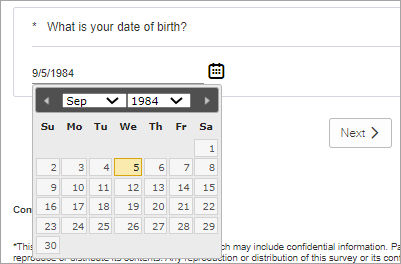
|
Sample classic mobile view: 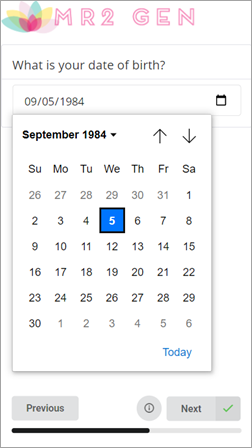
|
For more information, see Create a Date question.
Email questions ask participants to enter a valid email address as an answer.
|
Sample classic desktop view: 
|
Sample classic mobile view: 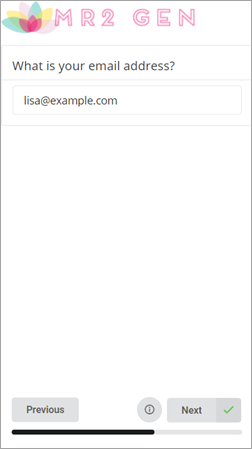
|
For more information, see Create an Email question.
Zip / Postal Code
Zip / Postal Code questions ask participants to enter a valid US Zip Code or Canadian Postal Code as an answer.
|
Sample classic desktop view: 
|
Sample classic mobile view: 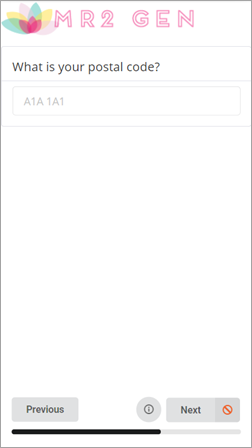
|
For more information, see Create a Zip / Postal Code question.
Phone Number
Phone Number questions ask participants to enter a valid US or Canadian 10 digit phone number as an answer.
|
Sample classic desktop view: 
|
Sample classic mobile view: 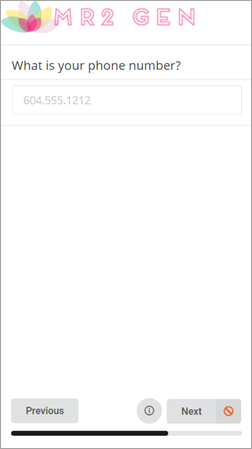
|
For more information, see Create a Phone Number question.
Appointment Booking
Appointment Booking questions invite participants to book an appointment with you. This question type leverages the power of Calendly to create and manage appointments across different time zones, track participation, and integrate with Outlook and Google calendars. For more information, see Create an Appointment Booking question.
|
Sample classic desktop view: 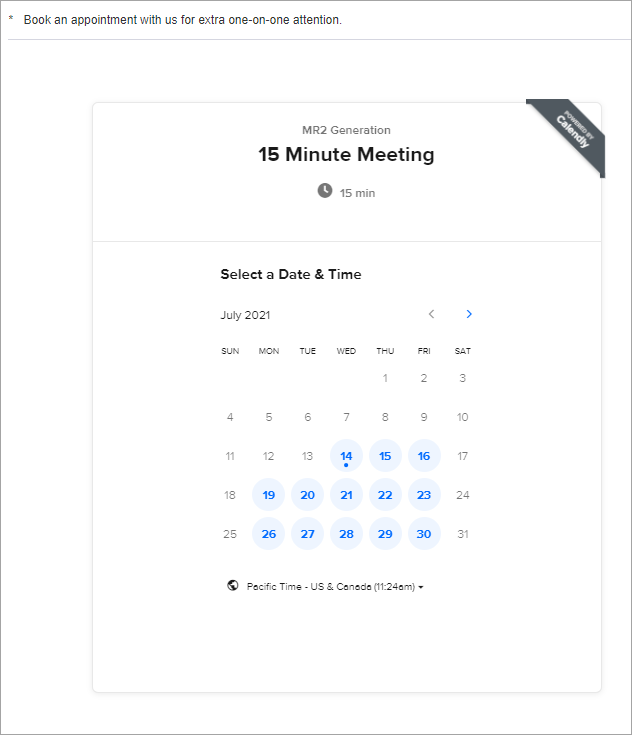
|
Sample classic mobile view: 
|
